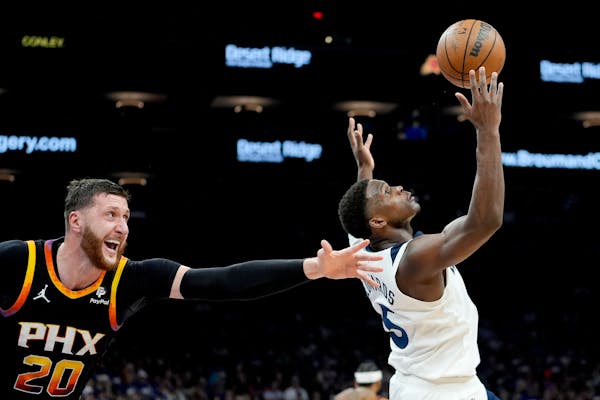Elsie Korioth's teaching tools for a recent afternoon class included a guitar, a small drum, a pile of colorful scarfs and her own ability to turn just about any classroom direction into a song.
"Music offers a really great multisensory approach to learning," Korioth, a music therapist at Pillsbury Elementary School in Minneapolis, said after a 30-minute class spent singing, drumming and dancing with a small group of children. "And the students are really motivated and engaged by it."
Music therapy has been offered in Minneapolis Public Schools since the early 1990s and used in special education since 2000. The program has been growing steadily since then as the benefits of music therapy have become more widely recognized, said Melissa Hentges, the district's music therapy lead. The city's schools now employ 10 music therapists who mostly work with students receiving special education.
But at least two schools — Emerson and Folwell elementary schools — have expanded the offering to general education students as well, focusing on teaching social and emotional skills. Emerson just added the music therapy class this school year.
"I just felt like this was needed for all our students, especially after the pandemic," said Emerson Principal Jim Clark. Many of the dual-language school's students have recently arrived to the U.S. and some had traumatic journeys, Clark said. "I felt that music could be very healing."
Student mental health needs have been more acute since the pandemic when students lost opportunities to build social skills and emotional maturity during periods of distance learning. The 2022 Minnesota Student Survey showed an unprecedented level of mental health issues at the high school level, and school counselors at all grade levels have reported seeing more students struggling with depression and anxiety.
Emerson's music therapist, Ginger Drake, focuses on teaching social and emotional skills through music therapy. Her class is different from a music education class because the goal isn't about learning to play an instrument; it's about teaching students to understand their emotions and foster a sense of community.
"Not only is it bringing together a big group of people from different backgrounds, but it gives each person an opportunity to be the expert in their own culture," Drake said. "That's important because we've got kids from all over the world."
At Transitions Plus, a Minneapolis Public Schools' program for 18- to 21-year-old students with learning disabilities, music therapist Christina Brantner works to teach students how to regulate their emotions.
After a high-energy dance jam, Brantner turns on some slower, calmer music and leads students through breathing exercises and stretches. On a recent morning in her "music and movement" class, a spirited round of jumping and grooving to "Gangnam Style" was followed up by some quiet chair yoga.
"It's about giving them that ability to regulate themselves," Brantner said. "We bring the energy level up and have fun and then help them find ways to bring it back down."
Plus, dancing, jumping and spinning scarves in a room full of others has its own lessons about teamwork and respecting others' space, Brantner said.
Drake, who hadn't done music therapy in a traditional classroom setting before this year, said she's been pleasantly surprised by how receptive the students have been and how much they've been learning from each other. They talk often about how music can reflect feelings, which has helped students be more vulnerable with each other, Drake said.
"After seeing this lady at the front of the room shaking shakers every week and hearing their peers talk about their feelings, more kids start to think 'Maybe I'm comfortable enough to share, too,'" Drake said. "That's really powerful."

In Grand Rapids, Itasca Pride is planning its first event, but there is already pushback
One person shot at YMCA in Coon Rapids

BCA says man pointed pistol-style BB gun at officers before he was shot in Woodbury

Former diversity worker sues University of Minnesota after firing over swastika photo

